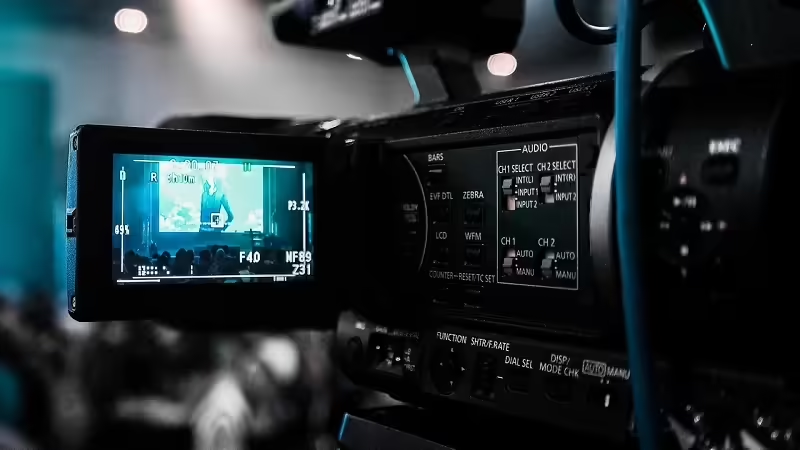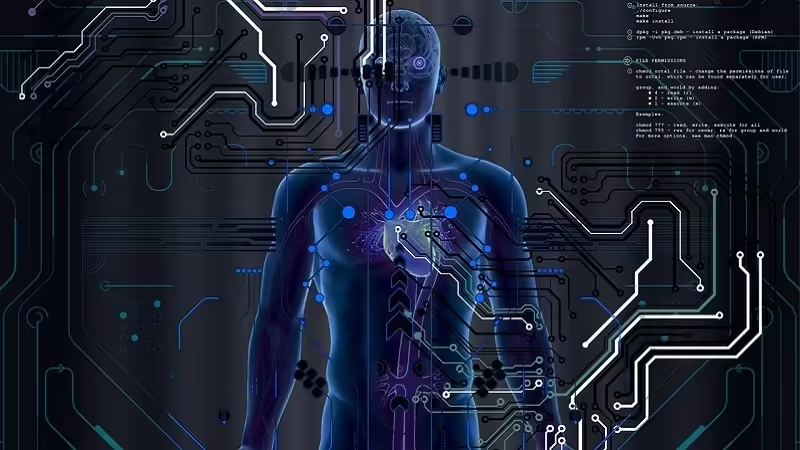
3D printing of artificial organs is a regenerative medicine technique with great potential to solve the shortage of organs for transplantation. However, one of the main challenges is to find a suitable material to create three-dimensional structures that are compatible with the human body and can accommodate living cells. Recently, scientists at the Korea Institute of Science and Technology (KIST) have developed a new biocompatible and biodegradable bio-ink that uses temperature to control the printing process.
The bio-ink is composed of nanoparticles of hydroxyapatite, a mineral found in bones and teeth, and a biodegradable polymer called poly (lactic-co-glycolic acid) (PLGA). These components are mixed with water to form a viscous solution that can be printed at room temperature. When the solution is heated to 80°C, the bio-ink solidifies and forms a porous structure that allows nutrients and oxygen to pass into the cells.
KIST researchers have demonstrated that bio-ink is capable of printing complex structures such as ears, noses and blood vessels, and that these structures can be implanted in animals without causing rejection or inflammation. In addition, they have observed that cells printed with the bio-ink differentiate and mature properly, indicating that the material does not affect their function.
The new bio-ink represents a major breakthrough in the field of 3D bioprinting, as it offers a simple, safe and effective solution for creating customized artificial organs. According to the authors of the study, published in the journal Biofabrication, the bio-ink could be applied in the future to manufacture bone, cartilage or vascular implants for patients in need of transplantation.
Innovative ink created for 3D printing artificial organs
A team of researchers at the University of California, San Diego, has developed a special ink that makes it possible to 3D print artificial organs with high precision and functionality. The ink is composed of cellulose nanofibers and biocompatible polymers that intertwine to form a porous, elastic structure. This structure can house living cells and blood vessels, mimicking the natural tissue of human organs.
3D printing of artificial organs is a promising technique to solve the problem of donor shortage and immune compatibility. However, until now, the inks used for this purpose had limitations such as low resolution, fragility or toxicity. The new ink overcomes these obstacles and offers the possibility of creating personalized and functional artificial organs that can be integrated into the human body.
The researchers have demonstrated the efficacy of their ink by 3D printing a liver model that has a similar structure to the real organ. The printed model is about 3 centimeters in size and contains more than 40 million liver cells, as well as blood vessels that allow the flow of nutrients and oxygen. The results of the study have been published in the journal Advanced Materials.
The authors of the work hope that their ink can be used to print other types of artificial organs, such as kidneys, hearts or lungs, and that it can contribute to the advancement of regenerative medicine and tissue engineering. They also point out that their ink is cheap, easy to produce and environmentally friendly, as it uses natural and biodegradable materials.
Organ 3D printing is one of the most promising applications of biotechnology, but also one of the most challenging. The main obstacle is finding an ink that is compatible with the human body and can form complex and functional three-dimensional structures. A team of scientists at the University of California, San Diego, has developed a new ink that meets these requirements and could revolutionize the field of regenerative medicine.
The ink is composed of a biodegradable hydrogel and ceramic nanoparticles containing calcium and phosphorus, the same elements that form bones and teeth. These nanoparticles act as a cross-linking agent that hardens the hydrogel when exposed to ultraviolet light. In this way, a three-dimensional structure can be printed with micrometer resolution and high mechanical stability.
The advantage of this ink is that it is safe for the human body, as it does not provoke an immune or inflammatory response. In addition, the ceramic nanoparticles stimulate the growth of bone and vascular cells, which facilitates the integration of the printed tissue with the native tissue. Scientists have demonstrated the efficacy of this ink in animal models, where they have successfully printed bone, cartilage and blood vessels.
Organ 3D printing could have multiple applications in the field of regenerative medicine, such as the repair of bone or cartilage defects, the replacement of damaged organs or the creation of models for the study of diseases. However, many challenges remain to be overcome, such as the scale, vascularization and functionality of the printed tissues. Scientists hope that this new ink will be an important step towards this goal.
Recent advances in 3D printing of organs and tissues: a review of the latest research and technology developments
One of the most noteworthy advances is the achievement of the Wake Forest Institute for Regenerative Medicine in North Carolina, which in 2017 published in Nature a new system to keep lab-created tissues alive and facilitate vascularization once they were used as bioincubators.
The system consists of a microimprinting technique that makes it possible to create a kind of microchannels with which to induce the formation of blood vessels needed to deliver nutrients and oxygen to the cells. With this method, Anthony Attala’s team succeeded in constructing and implanting an ear in a mouse with human cartilage grown in the laboratory, achieving the formation of blood vessels and even incipient nerve tissue.
Another example of cartilage 3D printing is the work of Mercedes Balcells, of the Sarrià Chemical Institute and MIT, who uses the bioprinter to create ear pinnae with lab-grown cartilage from human cellular material. Balcells has created rabbit ears and is already working on molding personalized human ears for patients with congenital or traumatic malformations.
Nieves Cubo, of the Spanish National Research Council, uses 3D printing to deposit cultured cells on polymer grids, which the cells absorb and generate bone or cartilage in the desired shape. This technique makes it possible to create bone prostheses from tissue formed from the patient’s own genetic material, which reduces the risk of infection and rejection.
3D printing is not only applied to cartilage and bone, but also to more complex and vital organs, such as the heart, liver or kidney. Although it has not yet been possible to print functional organs on a human scale, it has been possible to create semi-functional miniatures that can serve as models for studying diseases or testing drugs.
For example, scientists at the University of Pennsylvania announced in June 2022 that they had invented a new 3D bioprinting technique that makes it possible to close injuries in the craniofacial area by repairing bone and soft tissue at the same time. This technique could also be applied to other parts of the body requiring comprehensive reconstruction.
The safety and efficacy of 3D printed organs: an assessment of the latest research and clinical trials
3D printing is a technology that makes it possible to create three-dimensional objects from a digital model and a material that is deposited layer by layer. In the field of medicine, 3D printing offers the possibility of manufacturing human tissues and organs for transplantation, which could solve the problem of donor shortage and donor-recipient compatibility. However, this technique also poses significant scientific, ethical and regulatory challenges that must be addressed before its clinical application.
3D bioprinting is the process of creating biological structures from living cells and biomaterials that act as a support or scaffold. The cells can come from the patient himself (autologous), from another individual (allogenic) or from genetically modified animals (xenogeneic). The aim is for the cells to differentiate and organize themselves into the desired tissue or organ, while maintaining their functionality and vascularization.
One of the main challenges of 3D bioprinting is to make the printed tissues and organs safe and effective for use in humans. To this end, it is necessary to evaluate their biocompatibility, i.e., their ability to interact with the organism without causing adverse reactions such as inflammation, infection or immune rejection. In addition, it is necessary to verify that the printed tissues and organs meet the functional and structural requirements of the native organ they replace.
To evaluate the safety and efficacy of 3D printed organs, rigorous preclinical and clinical studies that follow current ethical and legal regulations are required. Preclinical studies consist of testing the printed organs in animal models or in vitro, to verify their viability, stability, integration and functionality. Clinical studies involve the use of the printed organs in human patients, following protocols that guarantee informed consent, personal data protection and long-term follow-up.
Currently, there are several lines of research and clinical trials exploring the potential of 3D bioprinting to generate human tissues and organs for transplantation. Some examples are:
– The creation of ear pinnae with lab-grown and 3D printed cartilage, which have been successfully implanted in rabbits and are expected to be applicable to humans with congenital or traumatic malformations.
– The fabrication of blood vessels through 3D microprinting, which makes it possible to induce the formation of vascular networks within the printed tissues, facilitating their nutrition and oxygenation.
– The development of bone and cartilage from cells grown on 3D printed biodegradable polymers, which can be used to create customized prostheses that adapt to the patient’s bone defect.
These research and clinical trials demonstrate the advancement and promise of 3D bioprinting as a tool for regenerative medicine. However, there is still a long way to go.
The ethical and legal challenges of organ 3D printing
One of the main ethical and legal challenges of organ 3D printing is intellectual property. As organ 3D printing becomes a more common technique in regenerative medicine, disputes over the intellectual property of 3D printed organ designs are expected to arise. It is important that clear laws and regulations are developed to protect the intellectual property of the creators of 3D printed organ designs and to prevent the exploitation of designs without the permission of their creators.
Another ethical and legal challenge of 3D organ printing is privacy. With the ability to print organs using a person’s cells, there is the possibility that sensitive information about the person could be obtained through their cells. It is important that clear laws and regulations are developed to protect the privacy of individuals and ensure that genetic information obtained through 3D organ printing is kept confidential.
Liability is also a major ethical and legal challenge in organ 3D printing. While organ 3D printing can be an effective way to treat disease and injury, there is the potential for complications and side effects. It is important that physicians and manufacturers of 3D printed organs take responsibility for any side effects or complications that arise from organ 3D printing.






